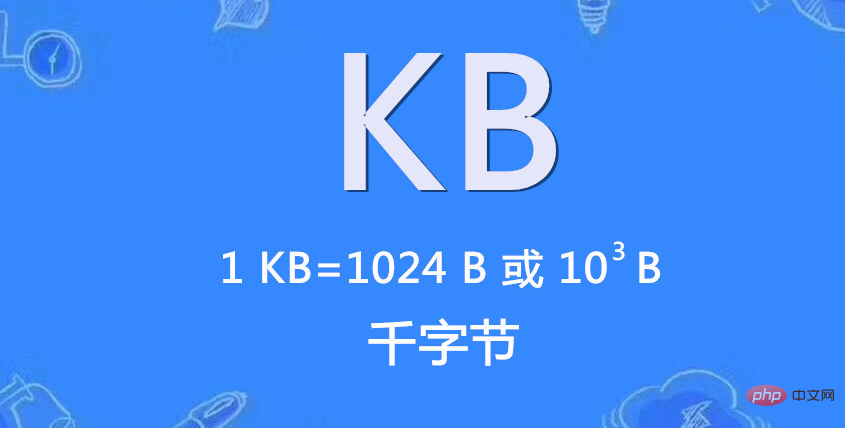
1KB memory can store up to "1024" ASCII characters. KB (kilobyte) is a multiple of the computer data storage unit byte, 1KB is equal to 1024B (byte); and ASCII code characters are represented by 7-bit binary encoding in the computer and are stored in a byte , that is, one ASCII code occupies one byte.

The operating environment of this tutorial: Windows 10 system, Dell G3 computer.
1KB memory can store up to "1024" ASCII characters.
kB (Kilobyte, kilobyte) is a unit of information measurement, which is a multiple of the computer data storage unit byte. Nowadays, it is usually used to identify the storage capacity of storage media with general capacity such as memory.
International System of Units (SI): 1KB=1024B (byte); 1MB=1024KB=1024×1024B.
The ASCII code characters are represented by 7-bit binary encoding in the computer and are stored in one byte; that is, one ASCII code occupies one byte.
So: 1KB can save 1024 ASCII characters.

Extended knowledge:
ASCII (American Standard Code for Information Interchange): The American Standard Code for Information Interchange is based on the Latin alphabet A computer coding system used primarily for the display of modern English and other Western European languages. It is the most common standard for information exchange and is equivalent to the international standard ISO/IEC 646. ASCII was first published as a standard type in 1967, and was last updated in 1986. So far, a total of 128 characters have been defined.
ASCII code uses a specified 7-bit or 8-bit binary number combination to represent 128 or 256 possible characters. Standard ASCII code, also called basic ASCII code, uses 7 binary digits (the remaining 1 binary digit is 0) to represent all uppercase and lowercase letters, numbers 0 to 9, punctuation marks, and special controls used in American English. Character [1] . Among them:
0~31 and 127 (33 in total) are control characters or special communication characters (the rest are displayable characters)
For example, the control character: LF ( Line feed), CR (carriage return), FF (page feed), DEL (delete), BS (backspace), BEL (ring), etc.;
Special characters for communication: SOH (header), EOT (End of text), ACK (confirmation), etc.;
ASCII values 8, 9, 10 and 13 are converted into backspace, tab, line feed and carriage return characters respectively. They do not have a specific graphic display, but will have different effects on text display depending on the application.
32~126 (95 in total) are characters (32 is a space), of which 48~57 are ten Arabic numerals from 0 to 9.
65~90 are 26 uppercase English letters, 97~122 are 26 lowercase English letters, and the rest are some punctuation marks, arithmetic symbols, etc.
Also note that in standard ASCII, its highest bit (b7) is used as a parity bit. The so-called parity check refers to a method used to check whether errors occur during code transmission. It is generally divided into two types: odd check and even check. Odd parity rules: the number of 1's in a byte of the correct code must be an odd number. If it is not an odd number, add 1 to the highest bit b7; even parity rules: the number of 1's in a byte of the correct code must be an even number. , if it is not an even number, add 1 to the highest bit b7.
The last 128 are called extended ASCII codes. Many x86-based systems support the use of extended (or "high") ASCII. Extended ASCII allows the 8th bit of each character to be used to determine an additional 128 special symbol characters, foreign letters, and graphic symbols.
For more related knowledge, please visit the FAQ column!
The above is the detailed content of 1KB of memory can store up to __ ASCII characters.. For more information, please follow other related articles on the PHP Chinese website!